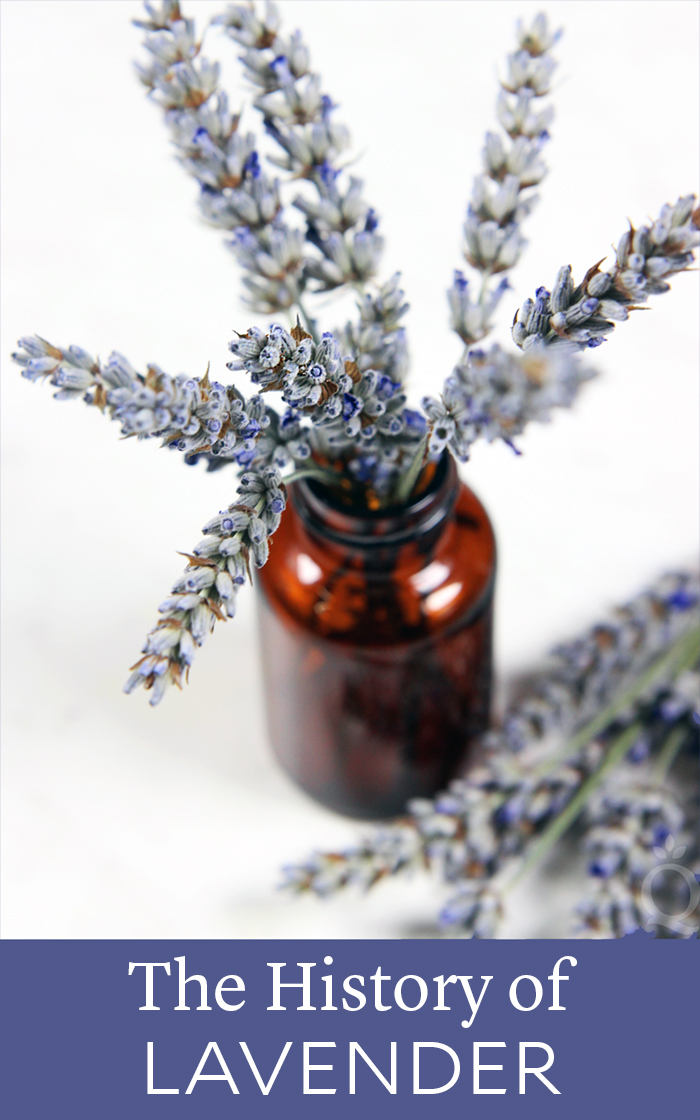
The scent of lavender is immediately recognizable. Today its floral, herby, and earthy notes add a special touch to everything from lotion to lemonade. That’s not a new concept, though – people have been taking advantage of lavender’s intoxicating scent for centuries.
Origins
The word lavender comes from the Latin lavare, which means “to wash.” Ancient Romans used the plant to scent their bath water because they thought it restored the skin, according to the New World Encyclopedia. They believed lavender had medicinal properties, and used it for everything from indigestion to sore throats. The Romans also used it to perfume their hair, clothes, beds, and even the walls of their houses.
Ancient Greeks used it for perfume as well. They referred to lavender as nardus or nard after the Syrian city of Naarda, where lavender was often sold. Egyptians used it for embalming and for cosmetics like massage oils.
Lavender’s popularity continued throughout history. It wasn’t used as much in the Dark Ages, but regained popularity during the Tudor period in England, 1485-1603. When Henry VIII dissolved the monasteries, people started growing lavender in their home gardens. It was used to freshen the air and was mixed with beeswax to make furniture polish, according to the Kitchen Project. In the Victorian era, 1837-1901, the Queen of England loved lavender and spoke of it often. Women used it to wash walls and furniture, as perfume and potpourri, and as a treatment for lice. In the U.S., it was popular in medicine and gift items.
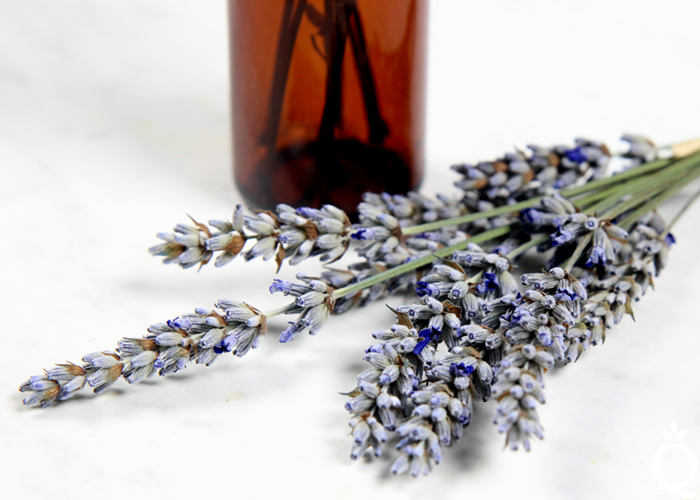
Present day
Many of the ways lavender was used throughout history are still popular today. No matter what store you’re in, you can always find bath and body products or perfumes with lavender notes. The Romans would be happy to know it’s still used in bath and cleaning products, along with wax tarts, room sprays, and potpourri.
Lavender adds an interesting floral taste to a variety of foods. It’s used in lemonade, lattes, cupcakes, ice cream, and more. The Baker Mama used it in her Lemon Lavender Poppy Seed Scones to add a bright and unique taste.
Of course, handmade products are a perfect way to enjoy the scent of lavender. The Relaxing Lavender Soap is scented with Lavender 40/42 Essential Oil, colored a lavender hue with Ultramarine Violet Oxide Pigment, and topped with lavender buds. For a spa day at home, give the DIY Lavender Clay Mask a try. It also works well in hair products, like this Hydrating Lavender Hair Oil. If you’ve never tried lavender essential oil or if you’re looking for different varieties, you’ll love the new Limited Edition Lavender Essential Oil Flight.
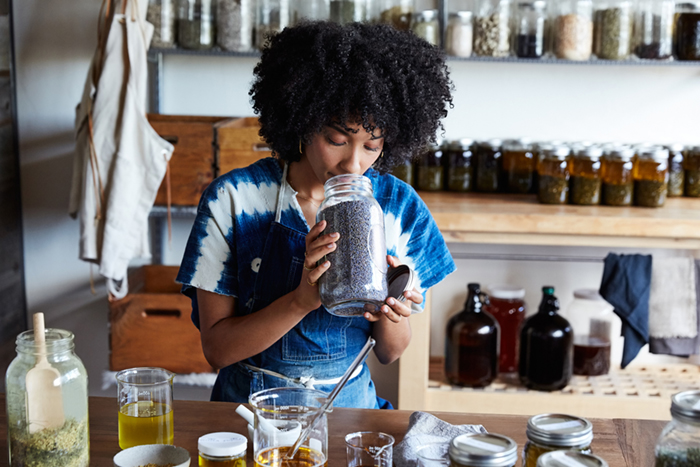
How the essential oil is made
The flight includes Lavender Fine Essential Oil, Lavender Absolute 50%, Bulgarian Lavender Essential Oil, and Organic Bulgarian Lavender Essential Oil. The Lavender Fine and Lavender Absolute are both from France. Lavender Fine is steam distilled. This method uses steam to break apart the plant and collect the resulting vapor. The vapor is condensed and separated into two parts – water and oil. The oil is then collected, bottled, and sent to your home. The Lavender Absolute is extracted by the solvent method, which is typically used when the plant is too fragile to withstand steam distillation. That creates a super thick, dark green liquid. It can be so thick that it’s tricky to work with, so ours is mixed with fractionated coconut oil.
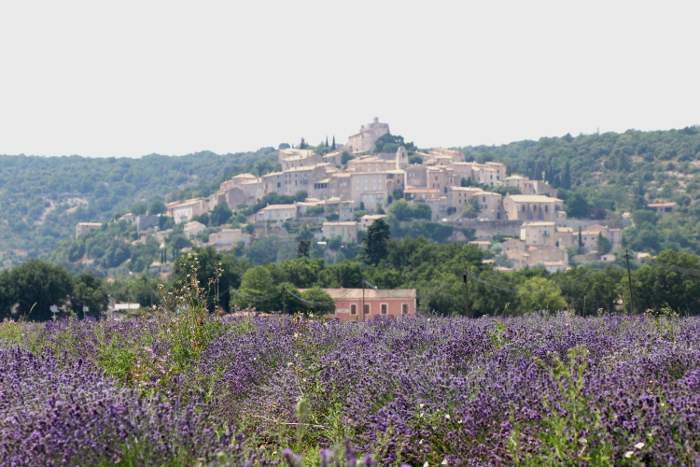 Pictured is the farm in France where the Lavender Fine Essential Oil comes from.
Pictured is the farm in France where the Lavender Fine Essential Oil comes from.
Both Bulgarian lavenders are extracted using steam distillation. The farms in Bulgaria are bigger, but the farming and distillation techniques used are similar to the farms in France. As a result, most of the difference between the oils is the way they smell. The Lavender Fine Essential Oil has a bright, herbaceous smell similar to citrus, and the Lavender Absolute 50% has a sweet and soft aroma. The Bulgarian Lavender Essential Oil has a deeper, darker scent. Compared to it, the Organic Bulgarian Lavender Essential Oil is lighter and has more more camphorous minty notes. Organic fields have a more “shabby” look, rather than the uniform appearance of the field pictured above. They also have a lesser yield than lavender grown by traditional methods.
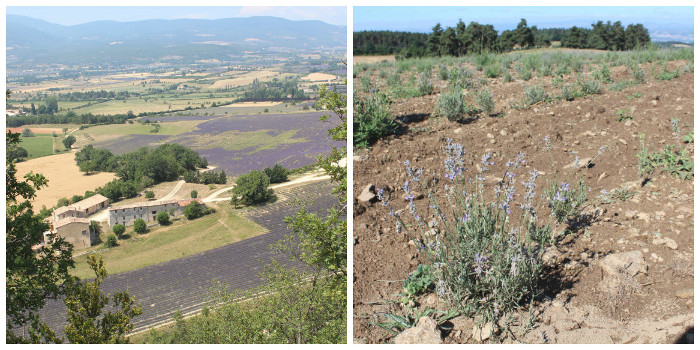 On the left is the farm where the Organic Bulgarian Lavender Essential Oil comes from, and right is a closeup of the “shabbier” look of the plants.
On the left is the farm where the Organic Bulgarian Lavender Essential Oil comes from, and right is a closeup of the “shabbier” look of the plants.
Whether you’re adding lavender to your handmade soap or your latte, there’s no denying its intoxicating and calming scent. What’s your favorite thing to use lavender in?
The post The History of Lavender appeared first on Soap Queen.
Keine Kommentare:
Kommentar veröffentlichen